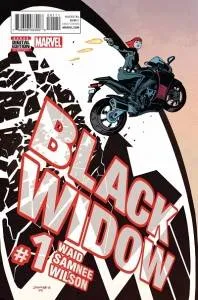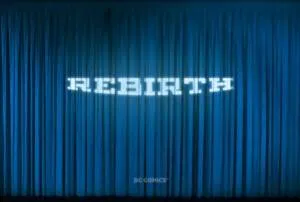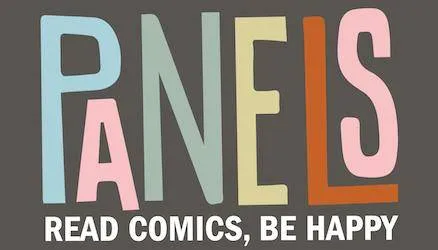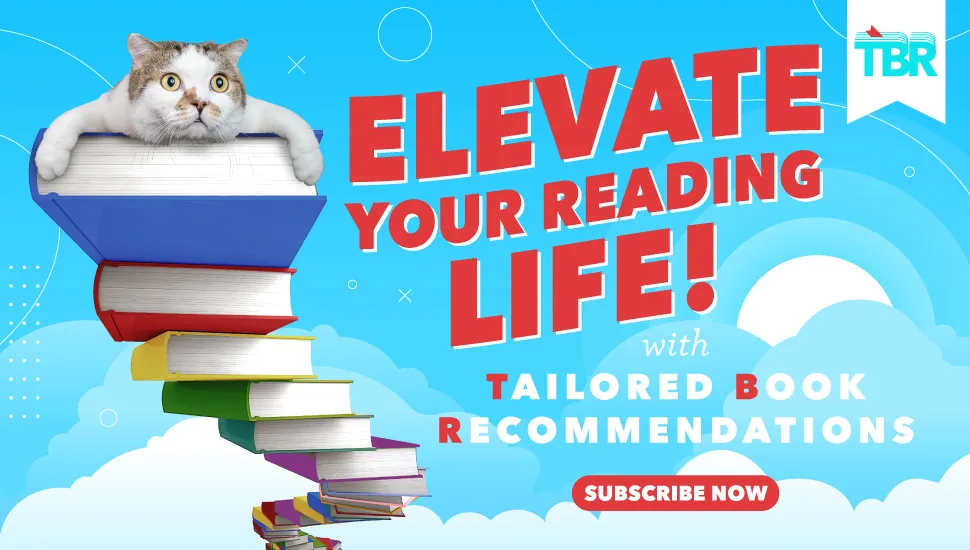
It’s Not that Simple: Diversity and Comic Book Sales
This post was originally published at Panels, our sister site about all things comics! Check out more from them here.
_______________
So there’s this article making the rounds. The article suggests that Marvel and DC have increased the representation of super-hero comic books, and this supply has been met with… weak sales. The article states that while some of this falls upon the publisher, the rest is heaped upon the collective shoulders of the reader. In other words: “They built it; why didn’t you come?” The implication being: this is just another case of the “loud” vocal minority on the Internet. Let’s take a deeper look at this whole idea, shall we? The first thing I see is that this piece focuses solely on single (print) issue sales. And while that’s a common metric and the most relevant for the direct market, it really casts a selective focus that ignores critical context. Panels is the perfect place for this conversation, because it is through Panels that I have seen — via statistics and anecdotal experience — that larger context. I think this is a classic case of using selective data to confirm an old bias. Let’s dig in.Who loves comic books?
 Comics are a medium. Maybe you just discovered them. Maybe you learned to read from comics. Either way, if you’re reading this, you love comic books in the same way you love books and movies. Which is to say: you love stories. Whether you love comics as the birthplace of the super-hero or because you love narratives built on sequential art, you are a comics reader. However, you don’t all read comics the same way, nor do you read them with the same priorities.
Comics are a medium. Maybe you just discovered them. Maybe you learned to read from comics. Either way, if you’re reading this, you love comic books in the same way you love books and movies. Which is to say: you love stories. Whether you love comics as the birthplace of the super-hero or because you love narratives built on sequential art, you are a comics reader. However, you don’t all read comics the same way, nor do you read them with the same priorities.
Format matters.
 Some of you like to read trade collections. Some of you like to read digital issues. Some of you like the floppy issues that you get from your local comic book shop. As such, we have fragmentation like we’ve never seen before. Why does this matter?
Well, for one, we don’t really have a lot of data on digital sales. We also don’t know if apps like ComiXology are the ideal app for an expanded audience. What digital represents is accessibility, but it also represents questions of digital rights management, ownership, platform problems, and formatting issues. As such, I think it’s safe to say that we’ve not yet reached the tipping point of digital sales, platform, and format.
And here’s the thing about trade paperback collections: they require numerous issues to be completed. Without changing direction, without scuttling plans and reassessing. If you cancel and reboot your line before a trade collection of a title is even solicited, you alienate the readers who are waiting, listening to the buzz, making plans to buy collections when they hit Amazon or their local bookstore.
Some of you like to read trade collections. Some of you like to read digital issues. Some of you like the floppy issues that you get from your local comic book shop. As such, we have fragmentation like we’ve never seen before. Why does this matter?
Well, for one, we don’t really have a lot of data on digital sales. We also don’t know if apps like ComiXology are the ideal app for an expanded audience. What digital represents is accessibility, but it also represents questions of digital rights management, ownership, platform problems, and formatting issues. As such, I think it’s safe to say that we’ve not yet reached the tipping point of digital sales, platform, and format.
And here’s the thing about trade paperback collections: they require numerous issues to be completed. Without changing direction, without scuttling plans and reassessing. If you cancel and reboot your line before a trade collection of a title is even solicited, you alienate the readers who are waiting, listening to the buzz, making plans to buy collections when they hit Amazon or their local bookstore.
Comics shops: Gateway or Gatekeeper?
 I love comics shops. I’ve worked at a couple and maintained pull lists at many more. I’m a Wednesday regular. At their best, comics retailers are the perfect doorman — the best retailers can ask you what you like and find a comic book for you. They are our front line — the most impassioned advocates of the medium.
However, for all the great comics shops out there, there are dozens more who are… not as great. We’ve written here about bad experiences with comics shops. There are many stories of female readers who feel uncomfortable in comics shops. Thus, at their worst, comics shops can be the stronghold of the gatekeeper, “No Gurlz Allowed” emblazoned on their shopfronts.
This has an impact. Especially if you’re just discovering super-hero comics and these amazing female super-heroes, and you want to join the conversation, but your best bet is a small shop two towns over that doesn’t understand you and forces you to pre-order Black Canary because they don’t feel the need to order for their known regulars if you don’t.
I love comics shops. I’ve worked at a couple and maintained pull lists at many more. I’m a Wednesday regular. At their best, comics retailers are the perfect doorman — the best retailers can ask you what you like and find a comic book for you. They are our front line — the most impassioned advocates of the medium.
However, for all the great comics shops out there, there are dozens more who are… not as great. We’ve written here about bad experiences with comics shops. There are many stories of female readers who feel uncomfortable in comics shops. Thus, at their worst, comics shops can be the stronghold of the gatekeeper, “No Gurlz Allowed” emblazoned on their shopfronts.
This has an impact. Especially if you’re just discovering super-hero comics and these amazing female super-heroes, and you want to join the conversation, but your best bet is a small shop two towns over that doesn’t understand you and forces you to pre-order Black Canary because they don’t feel the need to order for their known regulars if you don’t.
Distribution matters.
As I recap in my recent article on Kickstarter, those comic shops mentioned above, are part of a tight, closed loop system that really plays to the existing audience. Retailers are bound by the Diamond catalog, and by what they think they can sell based on their known audience. It’s tough for them to take a chance on a new audience because the merchandise they sell is not returnable. For the sake of their livelihood, they’re often served best by conservative thinking.Relaunches don’t matter.
 Marvel and DC keep rebirthing and relaunching. Is that a bad thing or a good thing? Does this help or hinder? So to be more specific here, let me say it differently: Numbering doesn’t matter.
The culture has changed. No one jumps into a series midway anymore. And I’m not even talking about comic books. I’m talking about TV shows. We are now a Netflix-DVD-on-demand culture, and when we hear about a new buzzworthy show, we start at season one, episode one. That’s how we roll. So what comic books need to do to nab that expanded audience? Great starting points that translate into a clear run in multiple formats.
Look at Saga, a perennial favorite around here. You heard about Saga. Heard good things. Checked it out. Where did you start? You started with the first issue, either digitally or in pamphlet form, or you began with the first trade collection or the first hardcover.
Doesn’t matter what format — you started at the beginning. And it was clear that whatever track you were on, you knew exactly how to continue.
Marvel and DC keep rebirthing and relaunching. Is that a bad thing or a good thing? Does this help or hinder? So to be more specific here, let me say it differently: Numbering doesn’t matter.
The culture has changed. No one jumps into a series midway anymore. And I’m not even talking about comic books. I’m talking about TV shows. We are now a Netflix-DVD-on-demand culture, and when we hear about a new buzzworthy show, we start at season one, episode one. That’s how we roll. So what comic books need to do to nab that expanded audience? Great starting points that translate into a clear run in multiple formats.
Look at Saga, a perennial favorite around here. You heard about Saga. Heard good things. Checked it out. Where did you start? You started with the first issue, either digitally or in pamphlet form, or you began with the first trade collection or the first hardcover.
Doesn’t matter what format — you started at the beginning. And it was clear that whatever track you were on, you knew exactly how to continue.
Wait, relaunches DO matter.
 You’re reading Ms. Marvel — you’ve discovered this young Pakistani heroine who seems like the perfect embodiment of your new comics reading habit… and then her series is ending… drawn into some kind of “event,” which just kinda seems like a black hole of confusion for you. And then, after a few months, her series… starts up again. Now, believe it or not, you’re actually one of the lucky ones. G. Willow Wilson is the writer again, and Adrian Alphona and Takeshi Miyazawa are the artists, and… well, hopefully your comic shop will know that you want to keep reading the relaunched series. But this isn’t always how it works out. Relaunches and reconfigurations of heroes — often before a single trade collection is out, as I mentioned earlier — can affect readers, especially those who are looking at trade paperbacks, and who are waiting to see if this series is even worth their time.
Remember when I said that the culture has changed? Well, as much as we love starting at the beginning, we also love long form storytelling. Game of Thrones. Harry Potter. Season binges on Netflix. The Serial podcast.
You’re reading Ms. Marvel — you’ve discovered this young Pakistani heroine who seems like the perfect embodiment of your new comics reading habit… and then her series is ending… drawn into some kind of “event,” which just kinda seems like a black hole of confusion for you. And then, after a few months, her series… starts up again. Now, believe it or not, you’re actually one of the lucky ones. G. Willow Wilson is the writer again, and Adrian Alphona and Takeshi Miyazawa are the artists, and… well, hopefully your comic shop will know that you want to keep reading the relaunched series. But this isn’t always how it works out. Relaunches and reconfigurations of heroes — often before a single trade collection is out, as I mentioned earlier — can affect readers, especially those who are looking at trade paperbacks, and who are waiting to see if this series is even worth their time.
Remember when I said that the culture has changed? Well, as much as we love starting at the beginning, we also love long form storytelling. Game of Thrones. Harry Potter. Season binges on Netflix. The Serial podcast.
So, what are we saying?
 It’s easy to pull up sales data, rattle off some numbers, and then suggest that diversity is an “experiment” that isn’t paying off. But that’s a myopic view that doesn’t give it the context of the entire system. Comics are much better known and accepted today than they were when I was growing up. The movies have shown that audiences love spectacular entertainment — especially super-heroes. Literature, especially YA literature, has shown us that we crave genre material.
I’ll leave you with this: there’s a reason that The Sandman remains such a luminous beacon of the DC/Vertigo imprint: the content appealed to a diverse audience, it was a long, serialized story that was accessible in multiple formats, and it remained under the vision of one writer for the entirety of its run. Today’s books that cross into the mainstream, like Saga? They have that same vision, that same autonomy, and that same wide-ranging accessibility.
It’s easy to pull up sales data, rattle off some numbers, and then suggest that diversity is an “experiment” that isn’t paying off. But that’s a myopic view that doesn’t give it the context of the entire system. Comics are much better known and accepted today than they were when I was growing up. The movies have shown that audiences love spectacular entertainment — especially super-heroes. Literature, especially YA literature, has shown us that we crave genre material.
I’ll leave you with this: there’s a reason that The Sandman remains such a luminous beacon of the DC/Vertigo imprint: the content appealed to a diverse audience, it was a long, serialized story that was accessible in multiple formats, and it remained under the vision of one writer for the entirety of its run. Today’s books that cross into the mainstream, like Saga? They have that same vision, that same autonomy, and that same wide-ranging accessibility.













